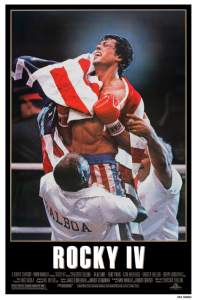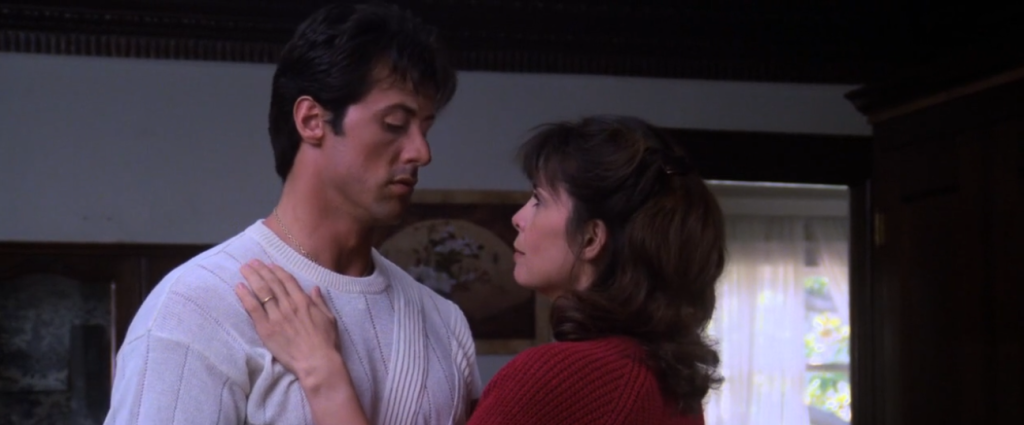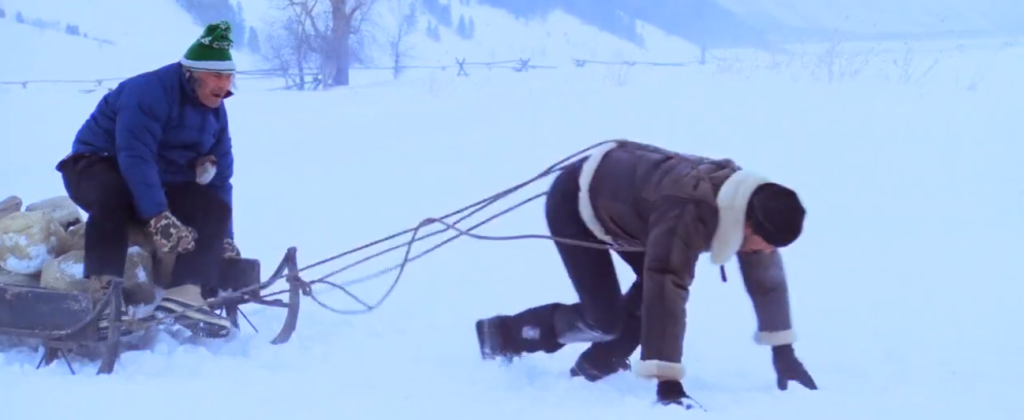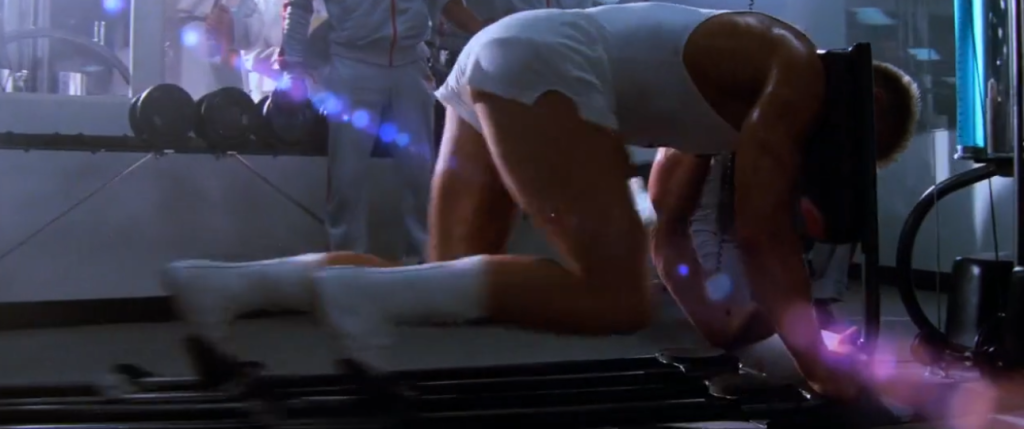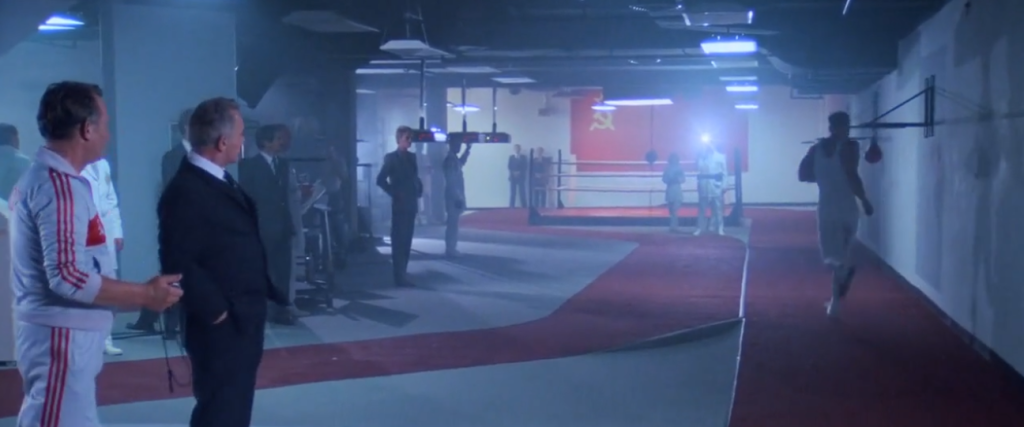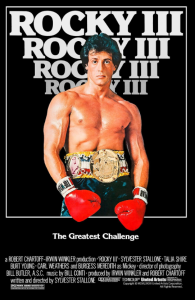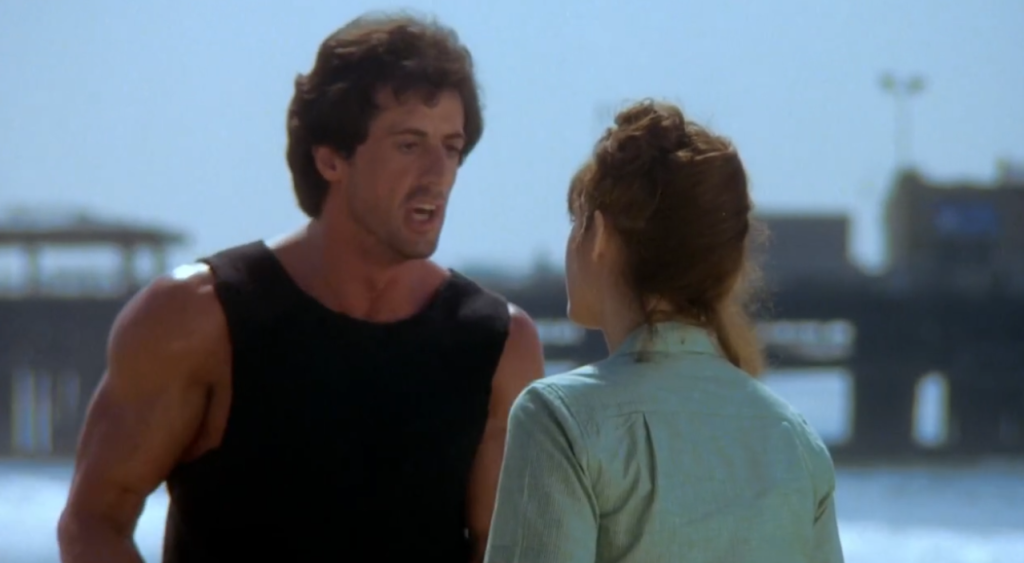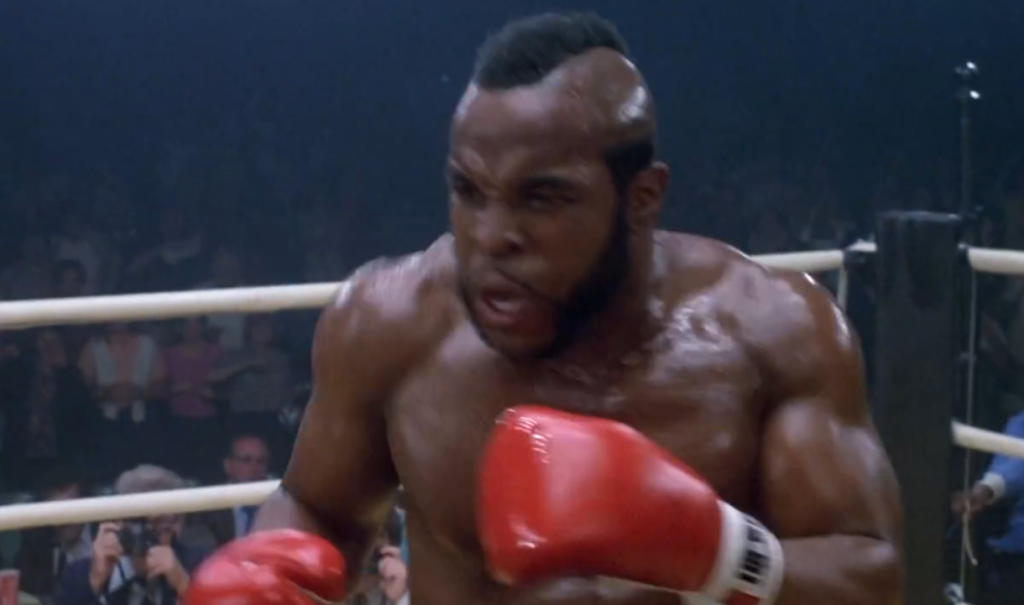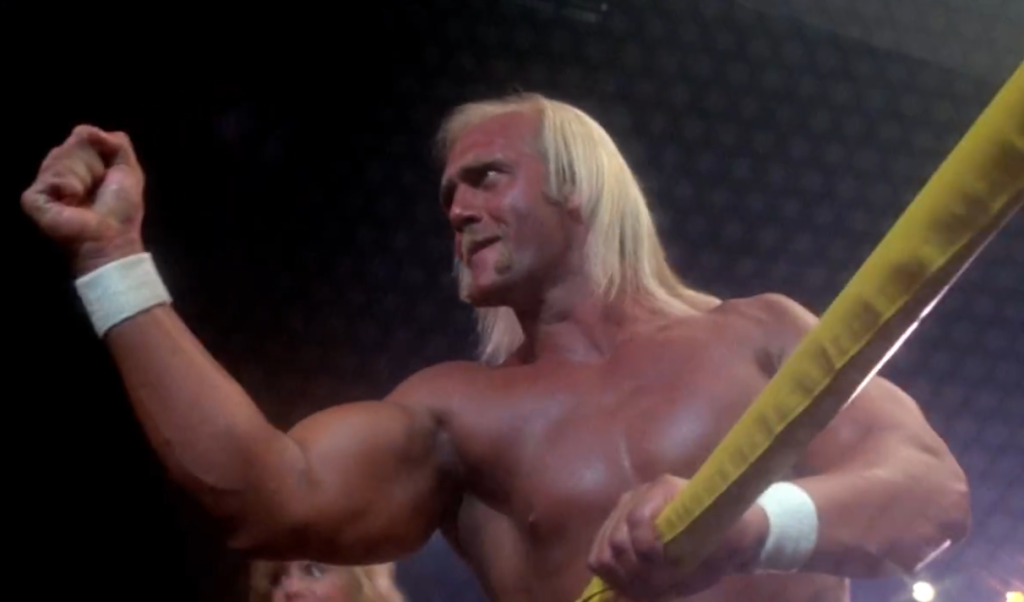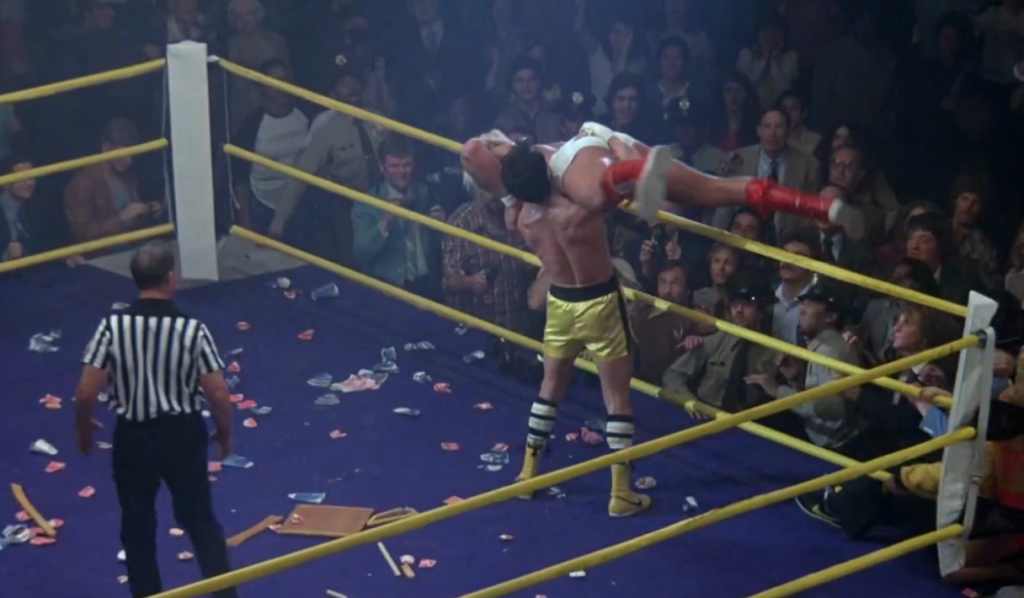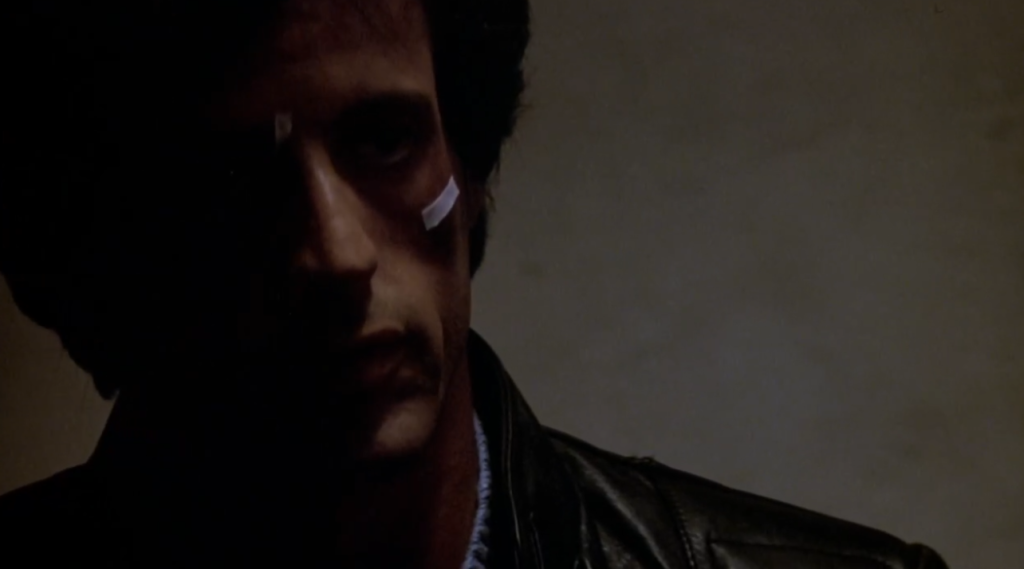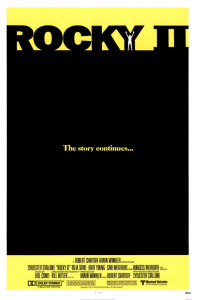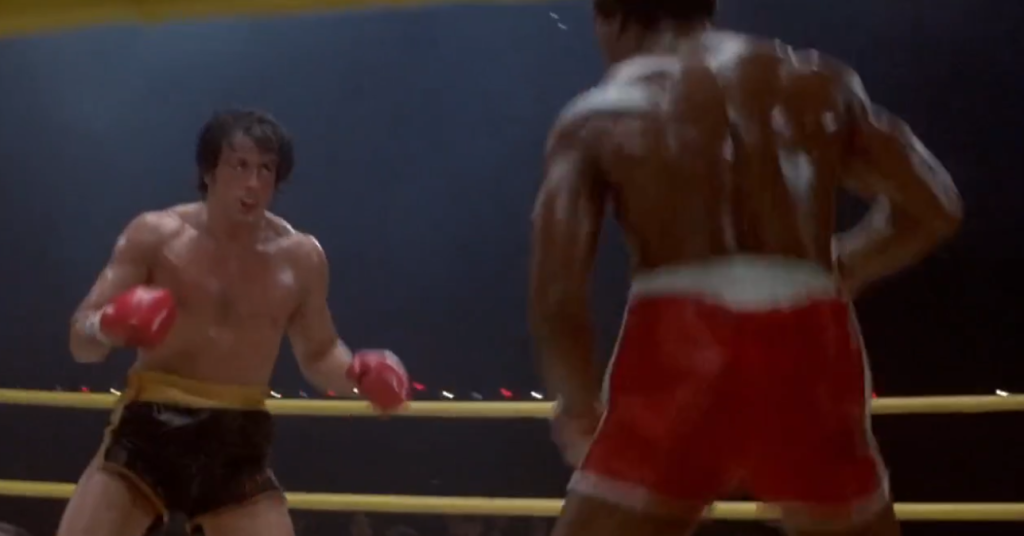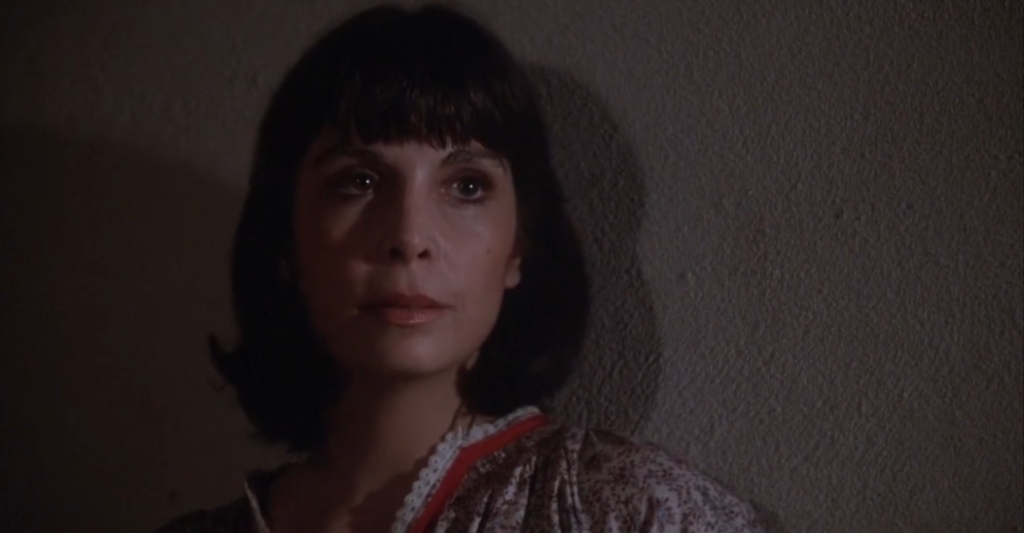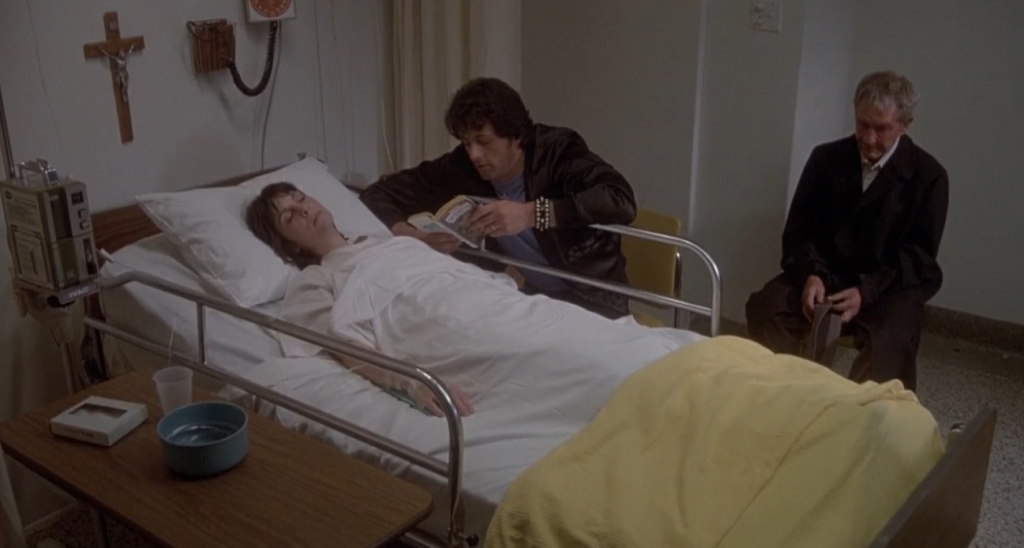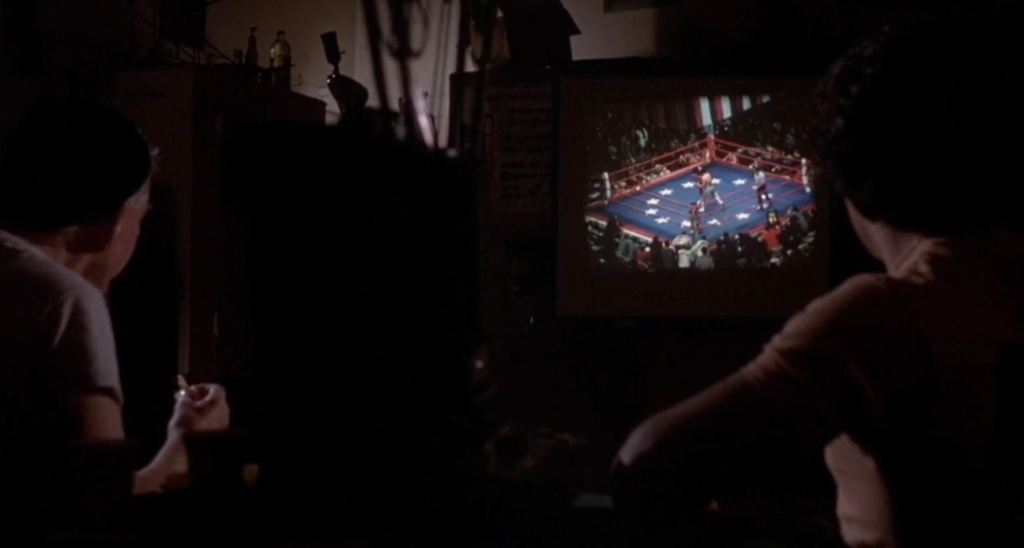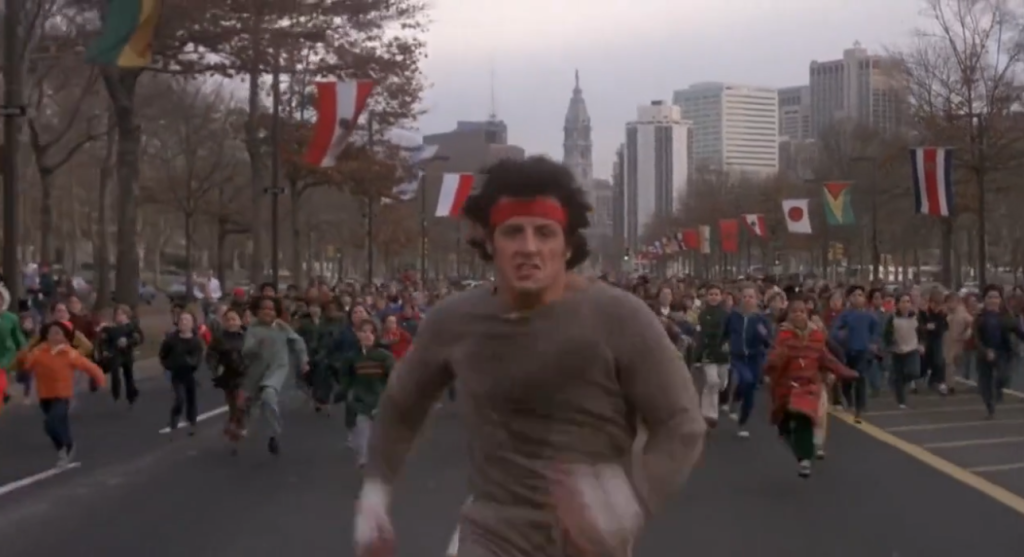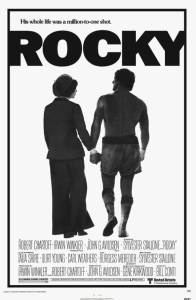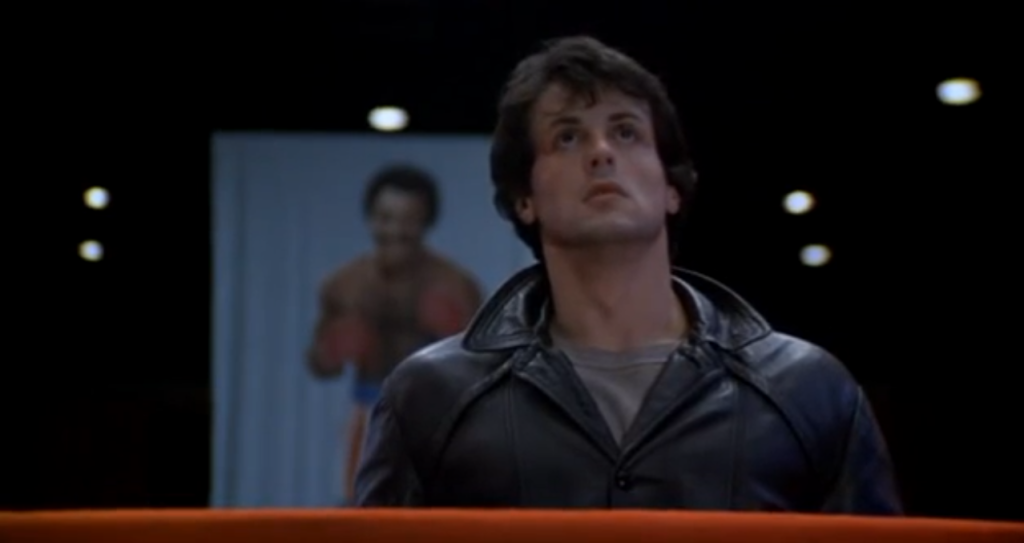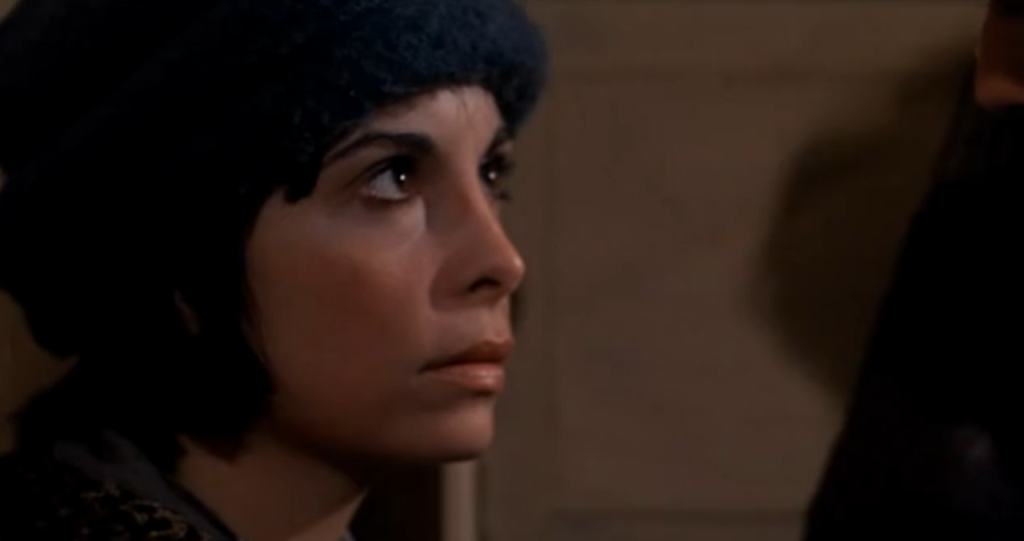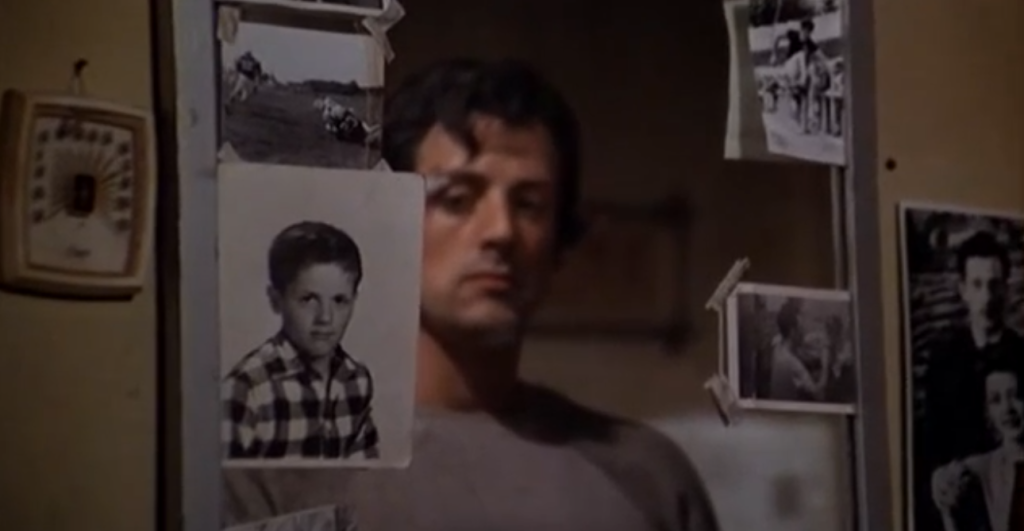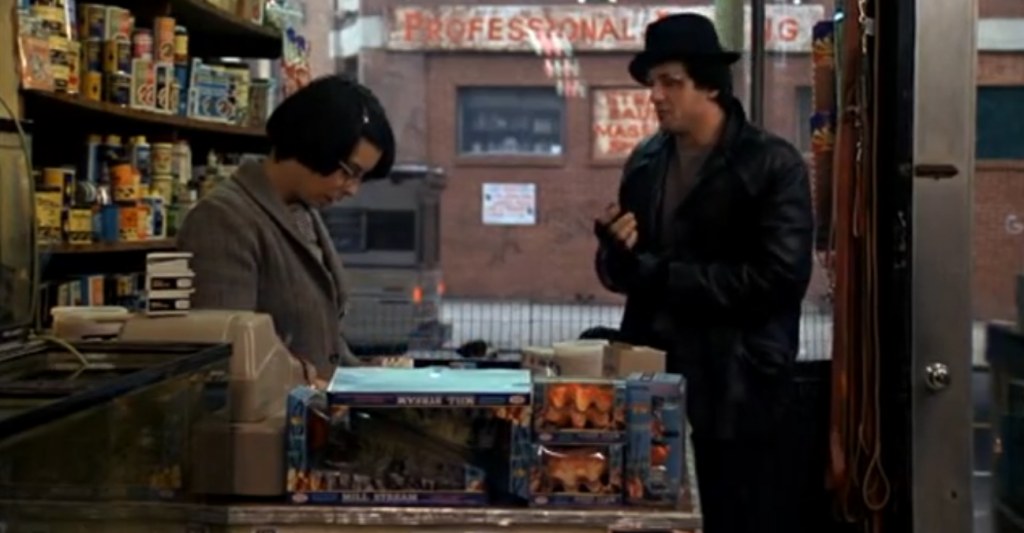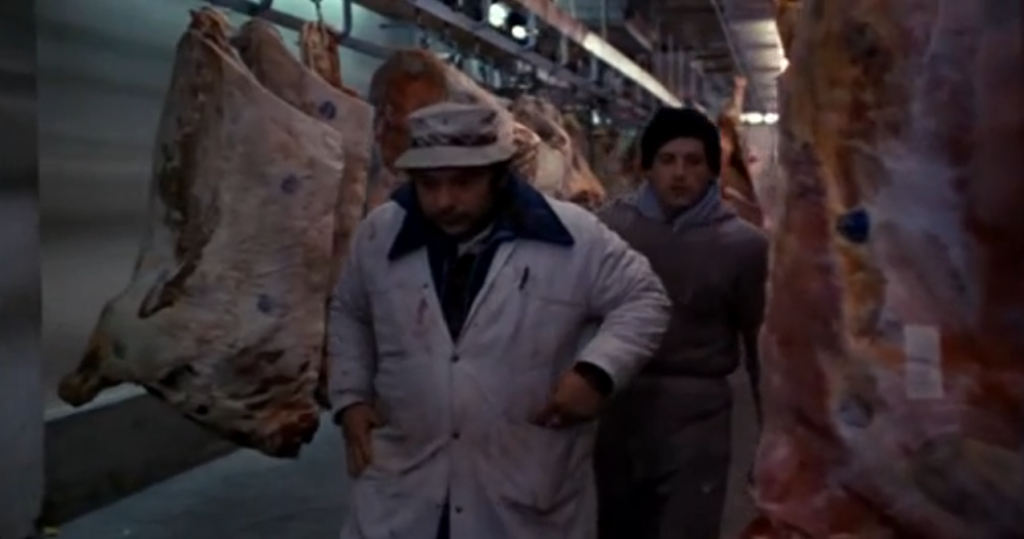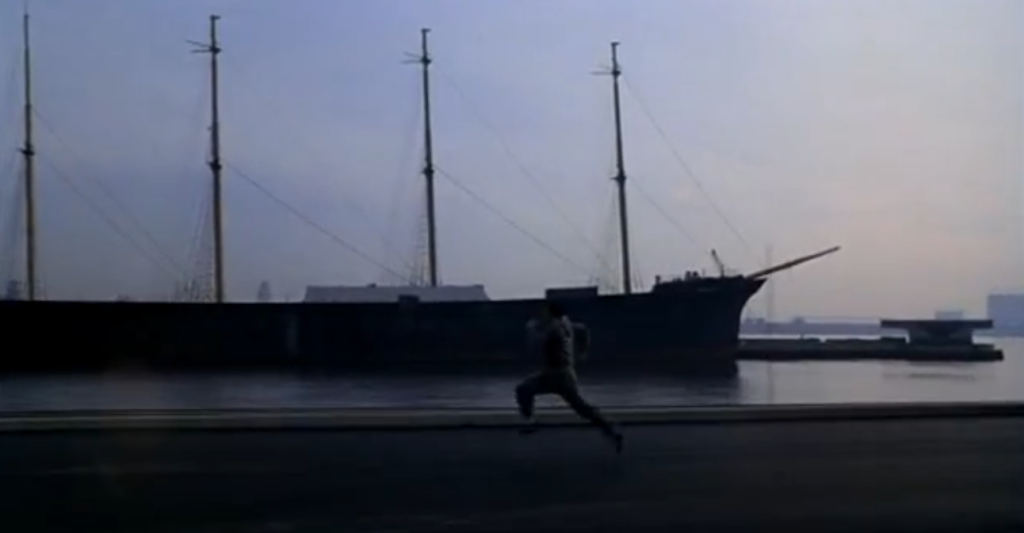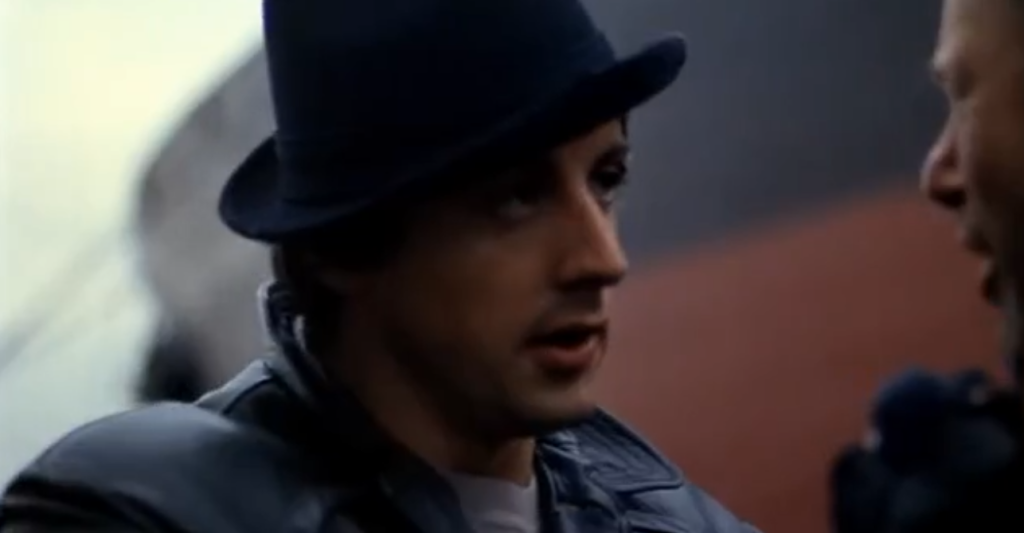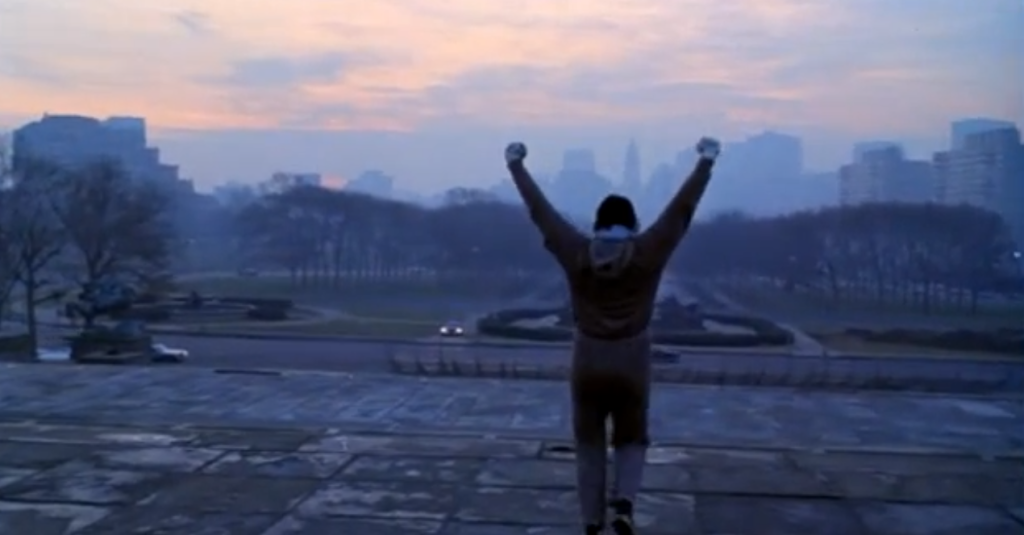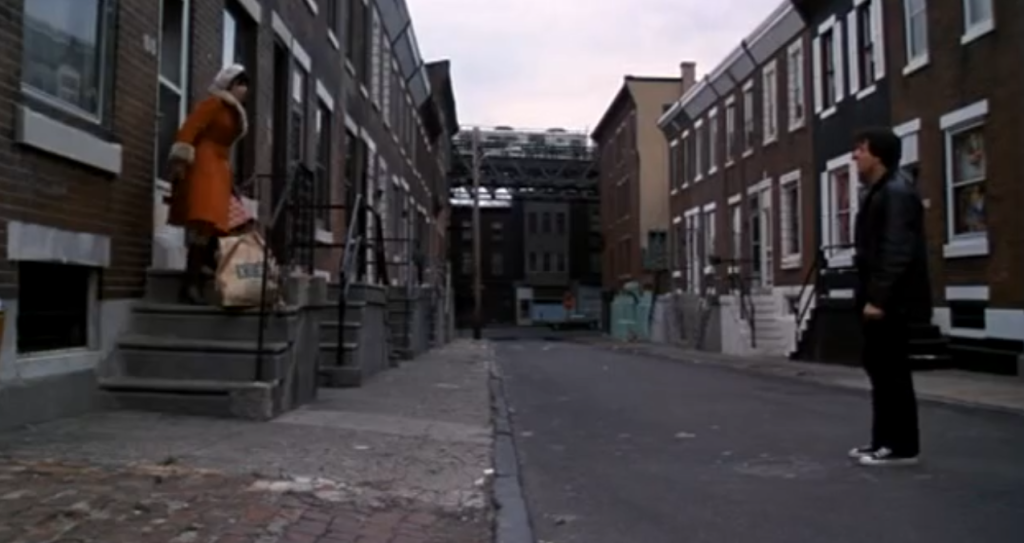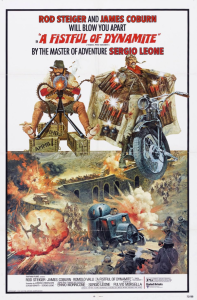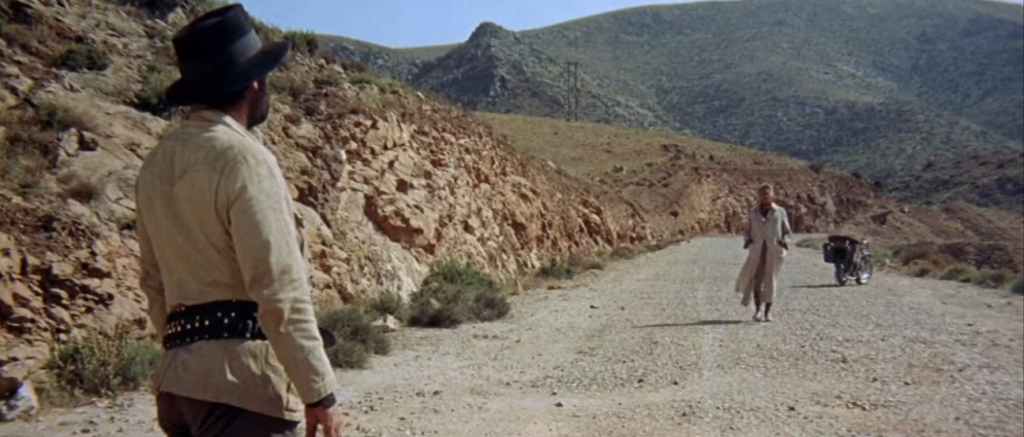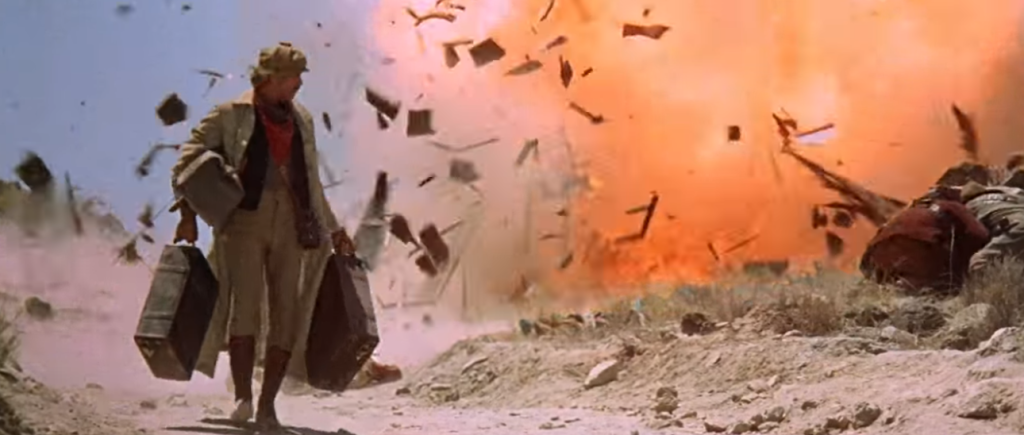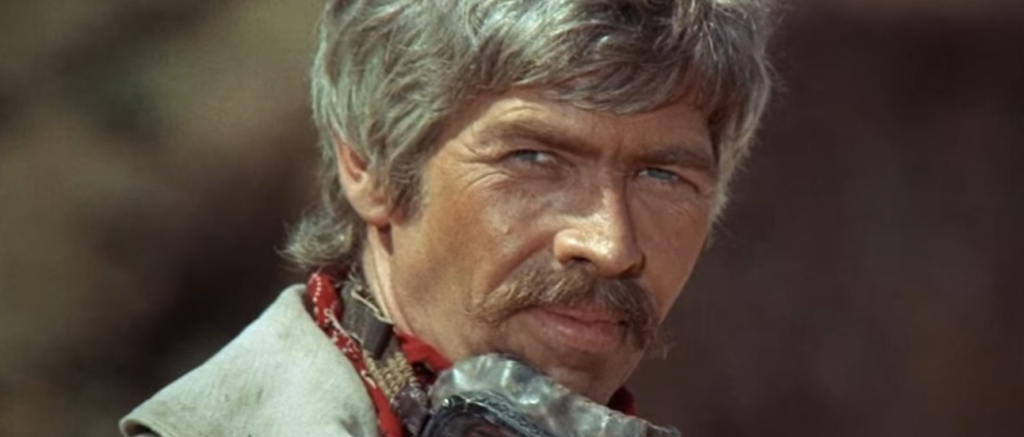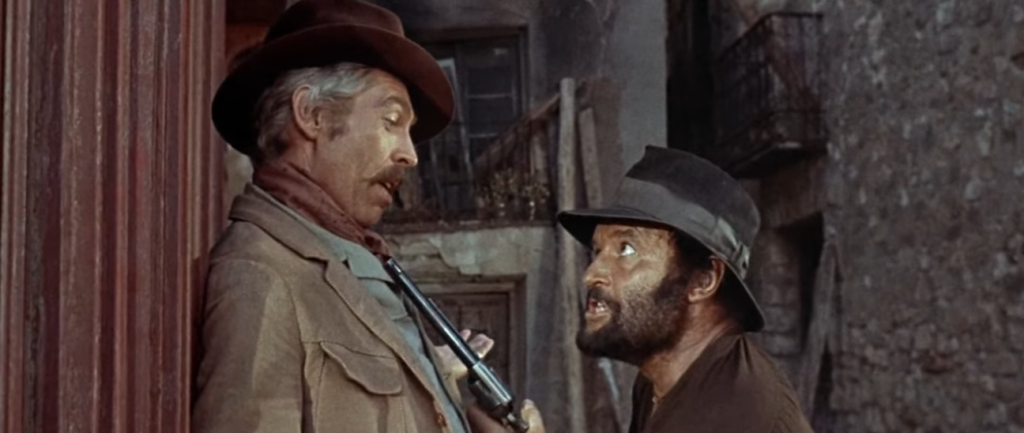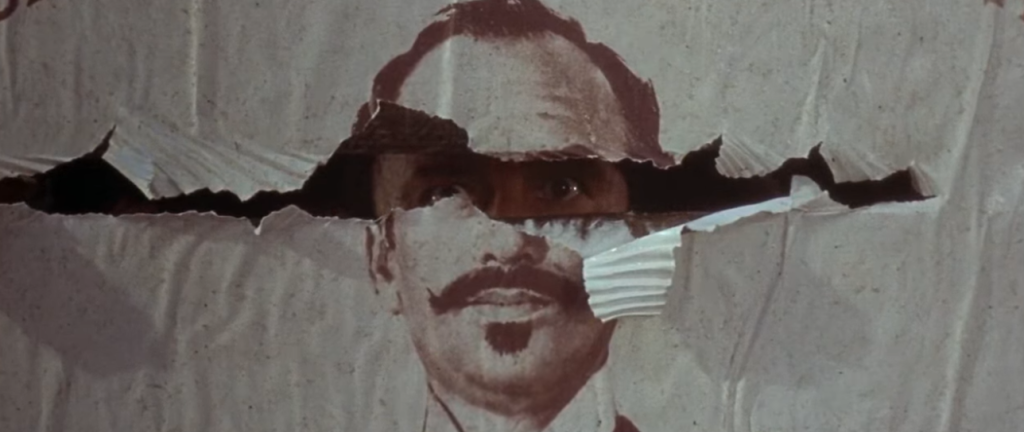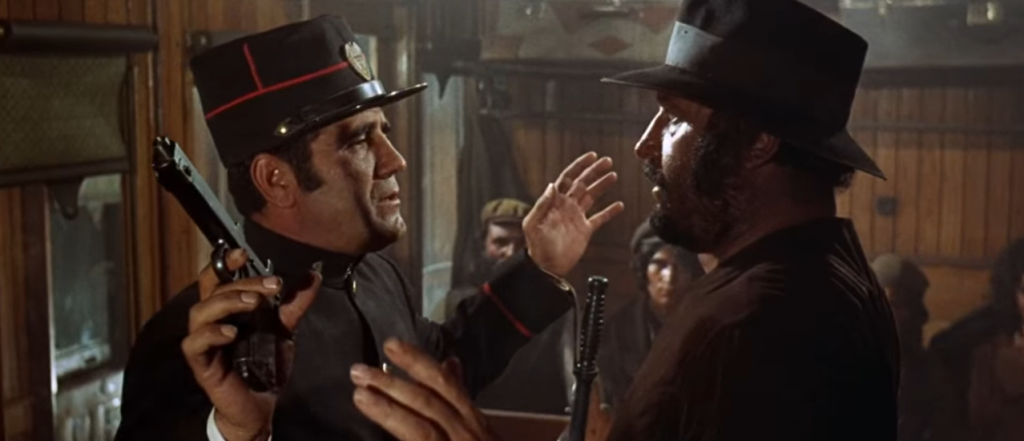Rocky IV (1985)
“I must break you.”
|
Synopsis: |
|
Genres, Themes, Actors, and Directors:
Response to Peary’s Review: He further points out the “lazy” dialogue, noting that “conversations between Rocky and wife Adrian (Talia Shire) have reached the point where long sentences last five simple words” (he’s overexaggerating to make his point), and that since “she has nothing to say,” she simply “smiles, looks worried, [and] looks pained.” Most egregiously, Peary writes, “Stallone’s direction has also become lax, so that his film is comprised of many montages with blaring music in the background” with each “equivalent to a rock video” which “could be shown intact as just that.” (According to IMDb, one calculation found that 31.9% of the movie consists of montages!) These are either flashbacks to the earlier films in the series, or laughably simplistic comparisons between Rocky’s training style (in the harsh environs of the Russian landscape — actually filmed in Wyoming) and Drago’s “high tech” indoors training, surrounded by his support team. Peary points out that “at least Drago — a sort of handsome, icier version of Richard Kiel’s ‘Jaws’ – is a more than satisfyingi villain” who “it’s a pleasure” to see Rocky ripping into. There’s not much more to say about this one except that it did really well at the box office; won 5 Razzies (and was nominated for 4 more); and was re-released as a director’s cut (entitled Rocky IV: Rocky vs. Drago) in 2021. Notable Performances, Qualities, and Moments: Must See? Links: |
